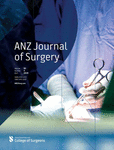June In Print: ANZ J Surgery Vol 90(4)

One of the main themes of this issue of the ANZJS is haemorrhage control in severe trauma. As outlined in the editorial By Balogh and colleagues from the Department of Traumatology at John Hunter Hospital in Newcastle, NSW, traumatic shock remains the most common cause of potentially preventable death and a significant contributor to morbidity associated with severe traumatic brain injury (TBI).1 Their observation that preventable mortality seems to have reached a plateau currently in Australia and New Zealand, supports the approach that rapid diagnosis of shock coupled with appropriate haemostatic resuscitation and rapid control of haemorrhage can have the biggest impact on reducing trauma mortality in mature trauma systems as seen across our region. Their editorial then goes on to review two papers: one out of Westmead, Sydney that relates to the timely transfer of patients to the operating room with provision for massive transfusion administration, and a second out of Israel that examines the potential application of REBOA as a means for early though temporary haemorrhage control.
Resuscitative Endovascular Balloon Occlusion of the Aorta (REBOA) is a resuscitative technique that has become recognised and used on a regular basis in many centres in North America, both for blunt and penetrating trauma. It is largely still considered an evolving technique however, in most jurisdictions across Australia and New Zealand. The perspective by Dr Beatrice Kuang and Dr Joseph Dawson outlines the history of REBOA beginning with the Korean War, through to more recent conflicts namely the Iraq and Afghanistan Wars.2 The more recent increase in utilisation seen in the civilian population is described in the setting of advances in endovascular techniques more broadly and the development of specific REBOA catheters. Also, of relevance are current local challenges as trauma surgeons and physicians seek to develop a clear understanding of the role REBOA could or should play within our local trauma systems.



